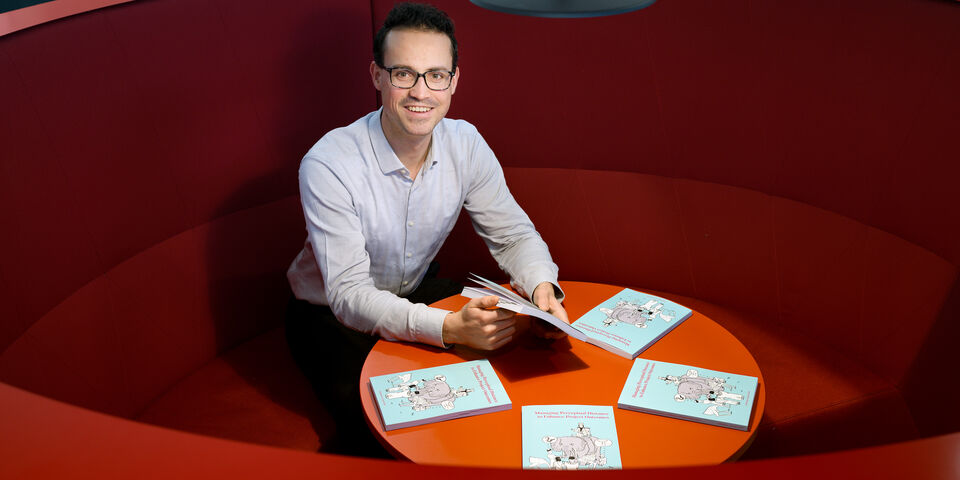Home Stretch | From a different perspective
Problems often arise during complex projects in the construction sector or ICT because the parties have no common understanding of how things are progressing and the possibilities. This prompted doctoral candidate Christian van der Krift to develop an online tool that sheds light on the difference in how the project partners view the situation.
Greater equality in the relationship between client and contractor is increasingly becoming the norm in all kinds of projects. After all, the party doing the work often has the greater expertise and experience. At the end of the day, however, the client is boss; as the saying goes 'the person paying the piper calls the tune'. Good communication about the expectations involved in complex projects becomes vital when these forces are at play, explains doctoral candidate Christian van der Krift. “In practice you see that when each of the parties has a different perception of how the project is progressing, this has a negative effect on the result.”
Elephant
In his doctoral thesis, to illustrate how people can experience the same project very differently, Van der Krift uses an Indian parable about six blind men who - using only touch - have to describe an elephant. As it is so big, they each experience only a part of the elephant: the man who feels the trunk claims that an elephant is similar to a snake, while the man who touches its ears thinks it is a fan. And the man who places his hand on its leg concludes that an elephant is like a tree trunk.
In a similar way, the impressions of a project developed by the two parties can differ widely, as the industrial engineer found. “You see, for example, that the competence of certain persons is assessed differently. Nor do people always agree on whether enough information is being exchanged, and on whether the objectives have been achieved or not.” It is precisely the issues that cannot be captured in a contract that can make the difference. “Particularly in the more technical projects, you see that things often go awry because of the soft aspects, the lack of interpersonal competences among these technical people.”
Different messages
Interim evaluations can catch this problem, explains Van der Krift. “But these are usually conducted from the client's perspective, while it may be their fault that things are going wrong. Because they have provided the wrong information, for example, or have not formulated the objective clearly. In addition, you sometimes see confusion arising because different departments at the client's end are sending different messages.”
The PhD candidate identifies two styles of project management: the ‘old-fashioned’ top-down approach in which the client exercises their power is often referred to by those in this field as ‘agency’, and the more modern, more egalitarian style with plenty of scope for the contractor's voice to be heard is known as ‘stewardship’. The point at which it often still goes wrong, he says, is when the relationship between the parties changes once the project is underway. “When the client suddenly takes control and the balance shifts towards agency. For the contractor it is then sometimes no longer clear what exactly is expected of him or her.”
Perception meter
To stop this kind of thing from happening, Van der Krift developed an online evaluation tool, the perception meter, which those involved can periodically complete and that awards different parts of the project a score. “This outcome sheds light on any differences in perception and then becomes a starting point for discussion.” Personally, he has already supervised this process on various occasions while studying for this doctorate. “Not only did this provide me with insights I could use in my academic work, it also worked in reverse, enabling me to share these insights with the field. That's important to me.” It was this idea that prompted Van der Krift, with the support of the Dutch Association for Purchasing Management (NEVI), to produce a summarized version of his thesis in Dutch.


Discussion